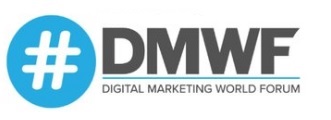
It is a trend that’s perfectly in step with the times. Account-based marketing (ABM) is becoming one of the dominant forms of marketing today, and with good reason; in an age where marketing is ever-present, mass marketing efforts are a lot less effective than individual marketing targeted at specific potential customers. From individually tailored marketing efforts, messages can be more targeted and avoid some of the stigma from marketing saturation today.
While ABM is a trend in marketing, within ABM there also are trends. With that in mind, here are five of the biggest ABM trends that are taking place in 2021.
Trend #1: Multichannel presence in ABM
Historically, ABM has focused on one-to-one interactions with leads in the form of in-person meetings, and connections at trade shows. But a recent Gartner study showed that only 17 percent of the typical B2B buyer’s time goes toward meetings with suppliers.
To get around this, ABM marketers are leaning more heavily on a multichannel approach to lead engagement. This includes platforms such as LinkedIn and Twitter, as well as other social media. It also plays more off of live chat baked into a company’s website, and the usual suspects such as text messages, email and calls (Zoom calls for the time being, mostly).
Through a multichannel approach, ABM can get this 1-on-1 time with prospects even though traditional methods have been reduced by the typical lead.
Trend #2: Sales teams are driving ABM
The line between sales and ABM is naturally a small one since ABM is effectively a link between the two separate parts of the buying process that are sales and marketing. Since the divide between sales and ABM is so small, sales teams are starting to take a more active role in ABM account selection.
This trend makes sense since sales teams already know which prospects should be targeted. For these sales teams to be able to work with marketing on ABM campaigns that facilitate closing the sale is a huge asset in the sales process. It also helps marketers show value, since these ABM efforts are more easily tied to sales results. The sales team still will take credit, of course, but marketing can easily point to ABM’s role in the sale.
Trend #3: Quantity is a primary metric for ABM performance
While aligning ABM with sales is helping marketers show the impact of their efforts, overall the metrics of ABM success still revolve around volume. B2B marketing executives are overwhelmingly using quantity as an indicator of ABM success.
Specifically, net-new accounts engaged, the number of qualified accounts, account engagement score and pipeline velocity are some of the ways that marketers are showing ABM effectiveness right now.
This focus on quantity is putting extra emphasis on B2B data providers so ABM has a wider pool of potential targets to generate these volumes. Good B2B data providers are the fuel that is driving many successful ABM efforts, since these providers are generating the means to engage across multiple channels and reach prospects more easily as a result of accurate contact information.
Trend #4: Use of B2B influencers to drive ABM
This trend is just starting to gain steam, but the opportunity is obvious. The collaboration between ABM marketers and B2B experts is a natural fit, because these B2B experts are visible, trusted, and prospects want to engage with them. At the same time, ABM can be a fruitful revenue stream for B2B influencers much as influencers in the retail space partner with consumer product firms. B2B experts monetize their expertise and reach, and ABM marketers get a potent channel for reaching individual accounts for ABM.
As mentioned, though, this trend is just now picking up. That’s partially because it is riding the wave of multichannel efforts in ABM, and also because some marketers in the B2B space are not yet fully taking advantage of B2C strategies in ABM. Of all the trends mentioned here, this one might therefore be the biggest opportunity for ABM marketers.
Trend #5: Customised content down to the ABM level
Finally, a fifth trend in ABM right now is taking content marketing production and mixing it with ABM for highly targeted content intended for individual prospects.
Instead of just tailoring content to specific industries or company roles, and going far beyond mail-merge style personalization already practiced widely in the marketing world, ABM marketers are engaging with their content creation operations from the onset and helping content marketing producers add personalized elements into marketing content at the time of production.
By having content created with ABM at the center, the level of customization can go much deeper since it is planned out from the beginning of the content creation process.
These trends are some of the biggest in ABM right now. But given the direction of marketing and the ongoing need to drill down even further with marketing messages, ABM is a highly dynamic space that is experimenting and growing at a fast clip. Expect more ABM trends to appear later this year, because ABM is hot.
Photo by Jonathan Petersson on Unsplash

Interested in hearing leading global brands discuss subjects like this in person?
Find out more about Digital Marketing World Forum (#DMWF) Europe, London, North America, and Singapore.






Great Post!
Thank you for this amazing article.